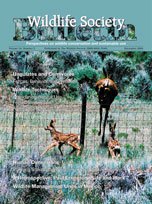Effects of herbicide use on forest biodiversity was the topic of a special section in the winter 2004 issue of The Wildlife Society Bulletin. In acknowledging public concerns regarding the toxic effects of herbicides, several of the contributing authors argued that these effects are negligible and that intensifying wood production would be beneficial for forest biodiversity and conservation by reducing habitat conversions. We contend there are other important environmental consequences; hence, responding to increased opportunities for selling wood products by augmenting supply through intensifying production should not be the only option. We argue that it is also important to develop mechanisms to reduce the demand for forest products. We believe the focus of the special section was too narrow, particularly with respect to benefiting biodiversity, because herbicide use also intensifies the export of wood products and, thus, nutrients. Other factors that must be considered include soil acidification caused by biomass export and fertilizer application, as well as additional acidification resulting from aerial emissions. In addition, because of mineral cycle dynamics constraints, intensively managed forests may not be sustainable for wood production, and less so for forest-dependent animals. Extensively exploited forests may deplete mineral reserves, and any intensification likely would speed up the declines. We believe the indirect impact from herbicides through accelerating mineral export and loss needs to be addressed, in particular how it may affect mammals' ability to accumulate essential trace elements. We contend using fertilizer applications as a corrective measure at the landscape level would be cost-prohibitive. Thus, heralding that herbicides, a tool to intensify wood production, benefit forest biodiversity appears premature, given the time scale of forest growth and soil development.
How to translate text using browser tools
1 December 2006
Herbicides and Forest Biodiversity: An Alternative Perspective
WERNER T. FLUECK,
JO ANNE M. SMITH-FLUECK
ACCESS THE FULL ARTICLE
It is not available for individual sale.
This article is only available to subscribers.
It is not available for individual sale.
It is not available for individual sale.

Wildlife Society Bulletin
Vol. 34 • No. 5
December 2006
Vol. 34 • No. 5
December 2006
Biogeochemical cycles
biomass export
ecological economy
forestry
herbicides
mammalian herbivores
selenium




